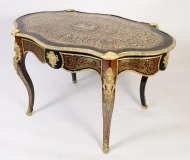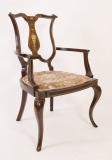Stylish, functional and beautiful antique furniture
A guide to buying antique furniture – timeless treasures to enhance your home or workspace
Basic guidelines when looking for antique furniture
Whether you are a novice or an experienced collector there are some basic guidelines that will help you when buying antique furniture.
Follow your head and your heart. Even though many pieces will appreciate in value over time most collectors do not buy antique furniture simply as an investment to make money.
 You need to really love the piece you are thinking of buying; it needs to feel special, which for most people is about intrinsic beauty and inspiring craftsmanship and artistry. You also need to think practically about how you will use or display the piece and how it fits in with the décor and feel of its intended setting.
You need to really love the piece you are thinking of buying; it needs to feel special, which for most people is about intrinsic beauty and inspiring craftsmanship and artistry. You also need to think practically about how you will use or display the piece and how it fits in with the décor and feel of its intended setting.
For most people this will mean placing pieces in a room or setting with a style or context related to the period although sharp contrasts can also work to great effect.
Following your head as well as your heart also means setting a top price and sticking to it if you decide to buy through an auction (including factoring in the buyer’s premium and VAT); doing your research and getting expert advice. Buying from a respected and well established dealer will provide more security and peace of mind than riding the riskier auction roller coaster.
Beware of pitfalls when buying antique furniture
When considering intended purchases of antique furniture make sure you really check the piece out, don’t be shy about picking it up, or crawling underneath. Does it feel right? Look for signs of intervention; there can be a fine line between conservation and restoration but you want the piece to be as original as possible. Too much restoration may reduce the value of the furniture by destroying the patina of wood.
Traditional tried and tested methods are the safest. Beeswax is preferable to chemical polish. Experts specialising in antique furniture restoration and conservation have made this their life’s work and the best results are truly wonderful.
Some extremely old antique furniture maybe very desirable and valuable despite significant signs of wear and tear because it is old, original and rare –wood inevitably shrinks and cracks naturally with age. Ideally you want your piece to be in mint condition but too much repair will have an adverse effect on value. Woodworm is usually a particular cause of concern but can be treated and worm holes in themselves are not necessarily a sign of active infestation. Tap the holes and if dust comes out then beware.
Documented provenance will greatly help, especially if you are unsure if the furniture is a genuine period piece or a later reproduction. As always talk to the experts.
Antique Furniture – Periods and styles
To qualify as antique furniture pieces must be over 100 years old. More recent furniture from the mid of later 20th century is classified as vintage. There are many periods and styles of antique furniture and geographical variations.
The basic English periods are-
- Jacobean 1600 to 1690 Simple, straight lines, strong and sturdy with Gothic influences
- Georgian 1714 to 1812 Mainly mahogany with elaborate carved legs
- Regency 1812 to 1830 More ornate romantic decorative styles
- Victorian 1837 to 1901 Heavy, dark and elaborately ornate
- Edwardian 1901 to 1910 Cleaner lines, lighter woods and blocky designs
French antique furniture can also be highly collectable and very beautiful, the main periods are-
- Louis XIV 1643 to 1715 substantial, highly detailed, very ornate, may feature gold trimmings
- Louis XV 1723 to 1774 elaborate with curved lines and asymmetry
- Empire 1804 to 1815 heavy woods and decorative bronze mounts
- Louis Phillipe 1830 to 1846 dark and decorative, early mass production techniques
Pieces and uses
A great range of antique furniture is available ranging from small individual items such as bedside cabinets, card tables or small bookcases for a small room; to vast and hugely impressive table and chair sets which would suit a major boardroom.
The setting and use of your intended piece will be key to deciding what to buy and as ever Regent Antiques can offer specialist, expert advice to ensure a successful purchase.

